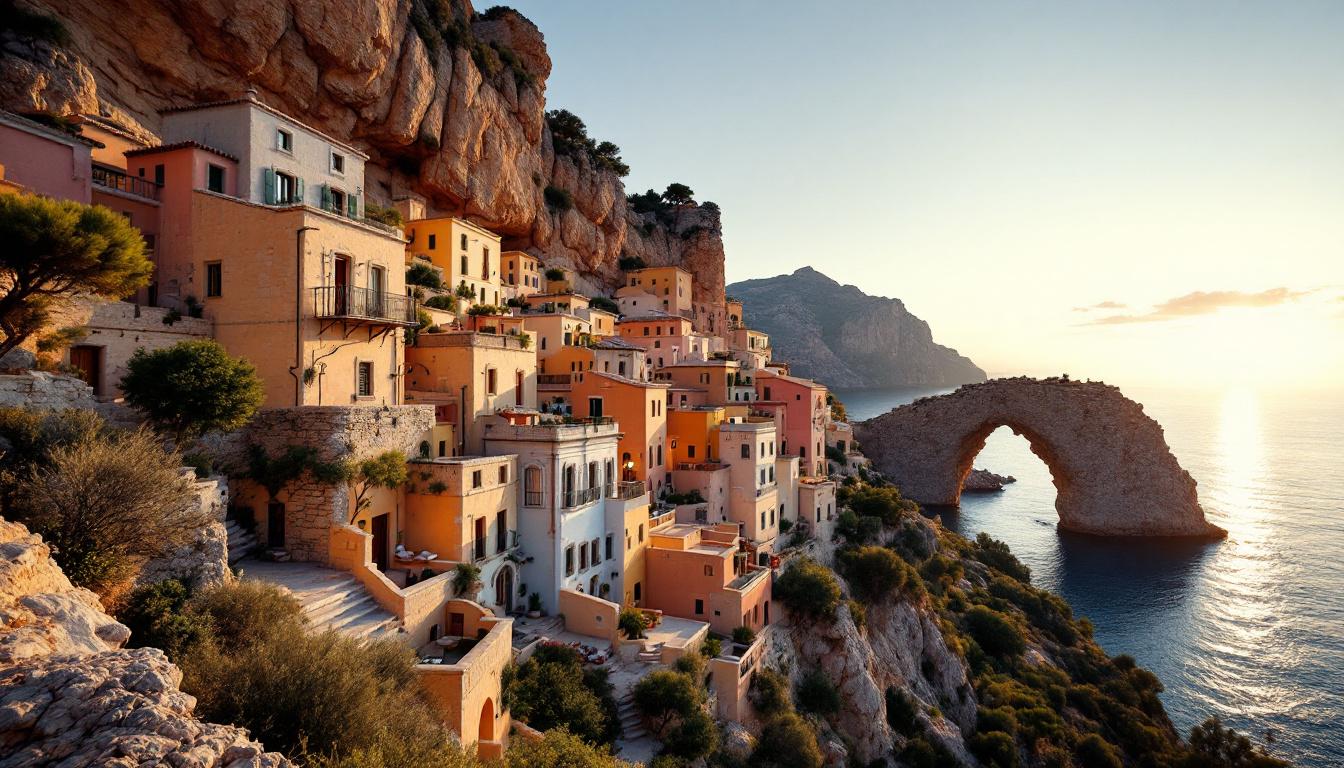The haunting song of a polyphonic chorus drifts through ancient granite passageways as the Mediterranean sun sets behind a naturally pierced rock formation. This isn’t a scene from a fantasy novel—it’s everyday life in Speloncato, a 570-meter-high village perched dramatically on a rocky spur in Haute-Corse, Corsica. Dating back to Neolithic times, this stone sentinel has witnessed millennia of history while remaining virtually unknown to mass tourism.
Where stone homes emerge from ancient rock
Speloncato’s most striking feature is its seamless integration with the natural landscape. Unlike other European villages that merely sit upon their foundations, Speloncato’s homes literally emerge from the granite—walls flow directly from bedrock, and corridors follow natural fissures. Locals call this phenomenon “living with the mountain, not on it.”
A 4,000-year timeline written in stone
The village’s name derives from “spelonche” (Corsican for caves), referencing the Neolithic caverns beneath the settlement. Bronze Age artifacts, Roman baths, and medieval structures create a physical timeline spanning four millennia. Unlike France’s medieval villages that preserve a single era, Speloncato displays every chapter of Corsican history simultaneously.
“Our village doesn’t have a museum because it is the museum,” explains Maria Giustiniani, whose family has lived here since the 16th century. “Each stone has witnessed something important.”
The mysterious Petra Tafunata phenomenon
West of the village stands Petra Tafunata—a massive granite formation with a natural arch. What makes this rock extraordinary isn’t just its unusual shape but its perfect astronomical alignment. During equinoxes, the setting sun passes precisely through the arch, illuminating the village’s baroque church tower in a phenomenon locals call “the eye of the ancestors.”
Living cultural heritage through polyphonic song
While other Mediterranean islands showcase their traditions primarily for tourists, Speloncato’s cultural practices remain authentically integrated into daily life. The village’s polyphonic singing tradition—featuring complex, overlapping vocal harmonies—continues not on stages but in homes, fields, and the central piazzetta, especially during Thursday evening gatherings.
The Cima district’s panoramic secrets
Speloncato’s highest quarter, known as Cima, offers breathtaking 360° views encompassing the Reginu plain, Lake Codole, and on clear days, the distant Mediterranean. Unlike crowded Mediterranean viewpoints, you’ll likely have this panorama entirely to yourself, even during summer months.
“The light here changes everything it touches,” notes photographer Jean-Paul Marchetti. “In morning mist, the village appears to float above clouds like a stone ship.”
A network of historic fountains
Seven ancient stone fountains dot the village, each with distinct water properties locals swear by for different purposes—from cooking specific dishes to treating ailments. The Fonte di a Croce, hidden between two houses on Route du Cimetière, features pre-Christian symbols carved alongside a cross, demonstrating Corsica’s layered spiritual traditions.
Beyond Speloncato: exploring Balagne
Using Speloncato as a base, the treasures of Haute-Corse unfold before you. The village provides easy access to beaches near Calvi (50 minutes) and L’Île-Rousse (35 minutes), while neighboring hilltop villages like Pigna and Sant’Antonino complement the region’s artistic heritage with their own distinctive character.
Practical considerations for visitors
Visit between April-May or September-October for ideal weather and fewer tourists. Renting a car is essential as public transport is limited. Park in designated areas around the village perimeter, as the narrow streets prohibit vehicle access. Accommodations are limited within Speloncato itself, but options abound in nearby towns.
As evening falls across the Balagne and the first stars appear above Speloncato’s ancient stones, you’ll understand why visitors often describe this village not as a destination but as a revelation—a place where time hasn’t stopped but rather accumulated in layers as tangible as the granite beneath your feet.
